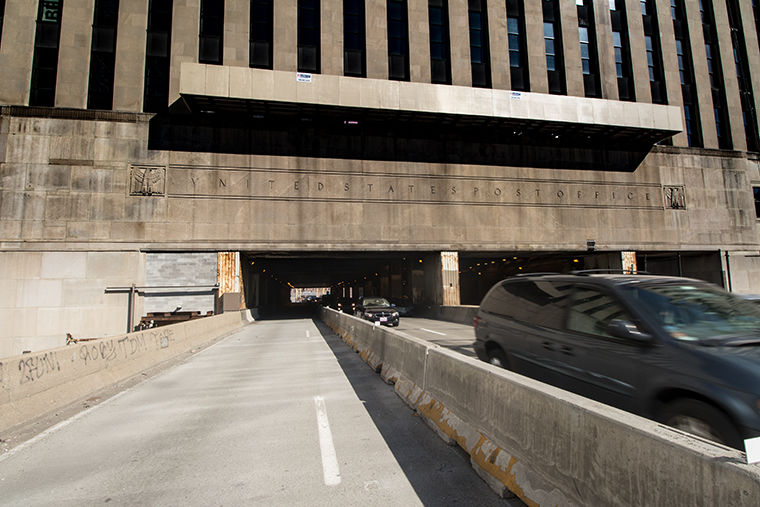Look around: Landmarks preserve Chicago history
March 26, 2018
Columbia students pass by historic landmarks on campus every day. Included are some of the buildings and sites in the South Loop that are listed on the National Registry of Historic Places as well as Chicago’s designated landmarks.
It is hard to ignore the massive Old Main Post Office that spans Congress Parkway. The 2.3 million-square-foot building that has been vacant since 1996 was recognized by City Council as an official Chicago landmark in February.
Built in 1921 by influential Chicago architecture firm Graham, Anderson, Probst & White, the structure is already listed on the National Registry of Historic Places. The 12-story art-deco-styled building was bought by 601W Cos., a New York City-based company that is implementing a $292 million rehabilitation plan to create office and retail space.
Emily Ramsey, who is working with MacRostie Historic Advisors as a historic preservation consultant on the project, said they expect it to be complete in about five years. It will include office spaces in what was once the industrial section of the post office and a gathering space in the lobby, Ramsey added.
“The design of the building is respecting the historic nature of the post office and [celebrating its history],” Ramsey said.
Lisa DiChiera, director of Advocacy at Landmarks Illinois, said the Old Main Post Office developers will convert the space that once served only one purpose into a versatile site, just like the South Loop’s Printer’s Row.
Printing House Row District was developed in the late-19th and early-20th centuries by printing and publishing firms that constructed facilities near the Dearborn Street railroad station, according to the city’s historic landmark website. The area’s unusual street pattern of long narrow blocks meant the buildings received an abundance of light, which was necessary for engraving and typesetting.
After the printing businesses began relocating in the 1960s, the printing houses were renovated for commercial and residential use. Several of the buildings, including the Dwight Lofts and Plymouth Court, are now occupied by Columbia students.
“We are always cognizant to try to help people understand that when a building changes use, it does not lose its historical significance,” DiChiera said. “You’re giving a historic building the opportunity to have a new life and that is absolutely critical for a building to be able to live through [yet]another generation.”
Vacant buildings can negatively affect communities, DiChiera said. Many sites are given landmark status because of their historic significance, but the designation helps encourage developers to renovate.
“When those buildings are repurposed, often there is a domino effect that is beneficial to a neighborhood or commercial district that gives others an impetus to invest, and that is what is important,” DiChiera said.
The Old Main Post Office will likely use its historic designation for tax incentives such as Class L, which is a property-tax reclassification, DiChiera said. Developers pay a lower tax rate for 12 years provided they invest half the property’s value into rehabilitation, according to the City of Chicago’s Historic Preservation website.
Chicago also has additional incentives for landmarked buildings that waive the building permit fee, DiChiera noted.
The Arc at Old Colony, 37 W. Van Buren St., which now serves as a residence center for Columbia students, used a large tax incentive during its renovation called the 20 Percent Historic Tax Credit, which covers 20 percent of costs as a credit for the developer, DiChiera said. The Arc was built as an office building in the late 19th century and was added to the national register for historic places in 1976.
“This city is such an architectural destination for a reason, and it is because we have such a collection of important, high quality buildings,” DiChiera said.








